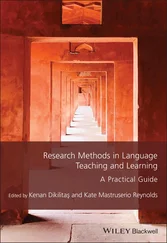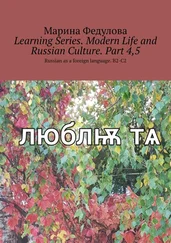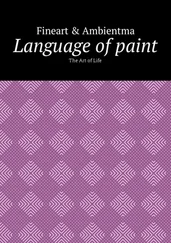I Physical and Vocal Warm-ups (30–60 minutes)
II Play and Games (30–60 minutes)
III Improvisations (60–90 minutes) and feedback (5–10 minutes after each improvisation)
The framework of the warm-ups is designed to include a variety of exercises awakening, sensitizing and developing three areas – body movement and awareness , breath and voice . For professionals in the performing arts, actors, singers, clowns, etc., such exercises constitute an essential and recurring element of both their entire training and their daily routines. In the context of a workshop for teachers, all of these areas can also be viewed as potentially relevant. Particularly for non-professionals, the warm-ups serve the equally vital function of helping participants to relax and open up, creating the physical, emotional and mental basis essential to overcoming internal barriers and enabling them to connect to those parts of themselves which will be called on in artistic and imaginative work of this kind.
6.2.1 The Opening Warm-Ups
The first warm-ups often focus on moving around and exploring the room. Everyone walks around, gradually becoming more aware of the space and of each other. A variety of possibilities in the room are then introduced as variations. For example, the group is asked to try to avoid large empty spaces or clusters of people; everyone is walking through the room and continually aware of the task of having the group spread out equally through the room. In a further variation, different objects and/or details in the room should be noticed, focused on and approached. The next step may be that the perceived object evokes appropriate sounds from the participants and can be spoken to. These objects are then imagined as being very important and are thus shown to as many of the other participants as possible. In another variation of this opening sequence, the participants are asked to become visible to all the others through establishing brief eye contact with each member of the group, while walking around the room. He explains what he is trying to achieve with these first exercises:
The objectives of a warm-up with a new group will be different from those of an experienced group. In a new group your objective is to gently ease people into the work. You do lots of short games and very easy tasks such as walking and looking at things. People don’t know each other and don’t know you. So the purpose is to create an atmosphere of playfulness and to ease people gently into the work. (Interview 2)
As becomes evident in the participants’ responses, these first warm-ups are generally considered to be both enjoyable and instrumental in establishing a basis for the work. However, there is also clearly a degree of embarrassment present for some participants. In some cases, these exercises were also found to be very challenging particularly with respect to those variations in which they had to use their voices, for example, while making odd sounds in ‘communicating’ with objects in the room, and/or in those exercises requiring brief eye contact with others. A number of participants reported both during the workshops and afterwards that they felt quite self-conscious at those points. In this context it becomes clear that although, on the one hand, he is very concerned to “ease people gently into the work”, on the other hand, he also considers it essential to establish certain ‘rules of clowning’ from the very beginning – even when the introduction of these rules may lead to a certain amount of discomfort:
When starting with a new group you need to establish the basic rules of clowning. Some of these rules are not easy for people. For example, using eye contact or your voice is difficult because these are things that profoundly reveal who you are. It touches the intimate or private side of ourselves. Your voice is what makes you emotionally very visible. If you are shy, you don’t speak out, you don’t make yourself visible. Eye contact and voice are key elements that you will need on stage to become visible. They are not comfortable, but they are theatrically essential because theatre is about making yourself visible. Eye contact is to establish your connection with an audience and voice is to amplify your emotional life. These are the two basic ingredients of clowning. (Interview 2)
In fact, these feelings of being uncomfortable and then being able to express this discomfort become a vital part of the entire process. He considers this recognition that it is acceptable to feel self-conscious and embarrassed to be a crucial step for participants. This implies that participants begin to realize that the essential element of clowning is not about ‘getting something right’, but about how they feel while doing an exercise:
It is very important that they feel that it is OK to feel self-conscious and that I am not asking them to feel relaxed in this work. The objectives of the warm-ups and games are not about doing them correctly. Some participants ask me if they could do an exercise again so that they might get it right the second time round. But for me, it’s not about getting it right or wrong. It’s about knowing how it went. That’s why I always try and bring out from the group the wide range of different feelings and ways of experiencing the work. Feeling embarrassed, or stupid is OK. It’s just one aspect of the work. It’s not the exercise that is important, but how people feel while doing the exercise. For the clowning it is important to establish this as a principle within the group. (Interview 2)
In this context, the essential role of personal feedback which participants and Gladwell give each other and which goes through all the phases of a clowning workshop, already becomes evident in the initial warm-ups. Although it is only in the third phase that there are carefully structured feedback sessions, from the very beginning participants are continually encouraged to express how they felt about each exercise. The recognition, admission and expression of all types of feelings within the group is a significant aspect of the entire process that occurs within a clowning workshop. The fact that a non-threatening and non-judgemental environment is created in which people are encouraged to own up to ‘difficult’ feelings was also considered by participants to be a highly significant part of the entire process. Yet, more than that, the expression of such feelings is a critical dimension present in the art of clowning itself:
In clowning, showing how you feel is what it’s about. So the audience wants to see you not only doing your job, in other words being on stage, but also being totally transparent in your emotions. If you feel awful or just want to get off the stage, you show that. When someone wants to go off stage, I often say just stay a little bit longer. That’s not because they don’t have the right to go off the stage but it is actually interesting to see someone wanting to go out, rather then to see someone going out. Wanting to go out can last five minutes and it can be extremely funny. It’s not funny to see someone going out. (Interview 2)
In the warm-ups there is a particular attention placed on breath. This corresponds, of course, to many theatrical warm-ups where the control of breathing, particularly in regard to all aspects of voice range and projection plays a central role in training and also in the context of daily exercises. When working with non-professionals, developing a heightened awareness of breath and breathing has different qualities. First, in comparison to the actor who is very well aware of the existential importance of breathing for her work, teachers often need to develop a general awareness of the significance of breath with respect to emotional behaviour and expression:
Читать дальше












